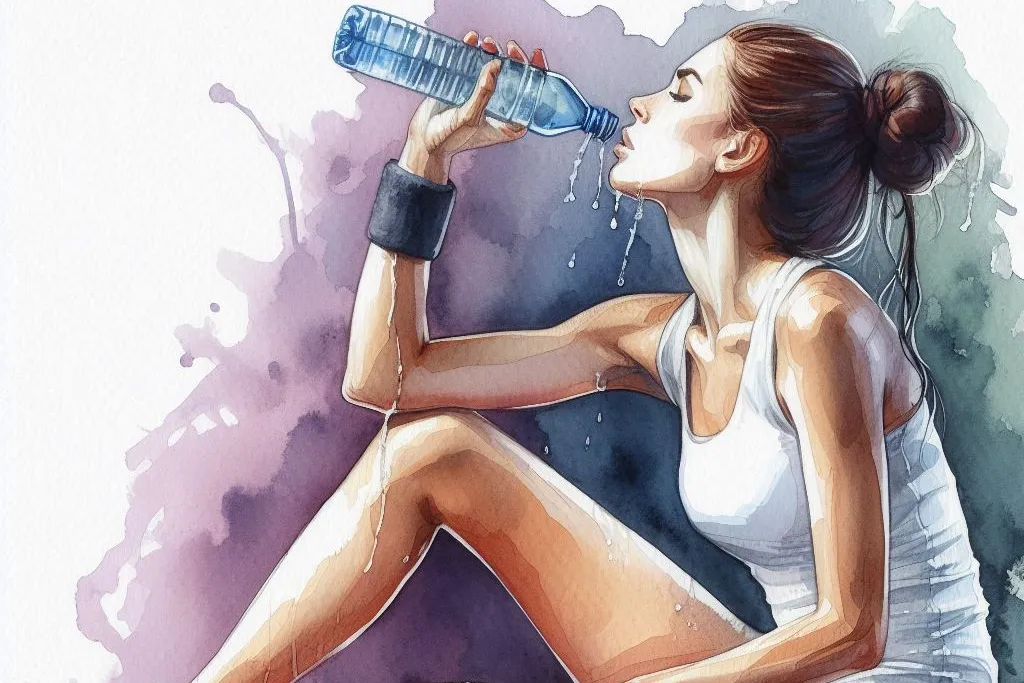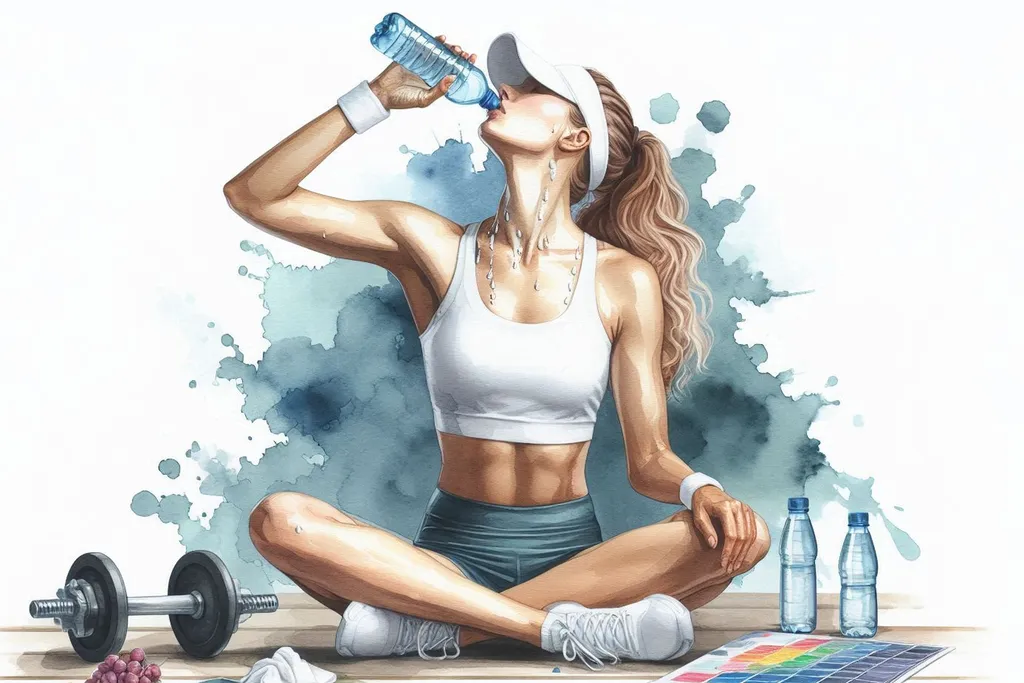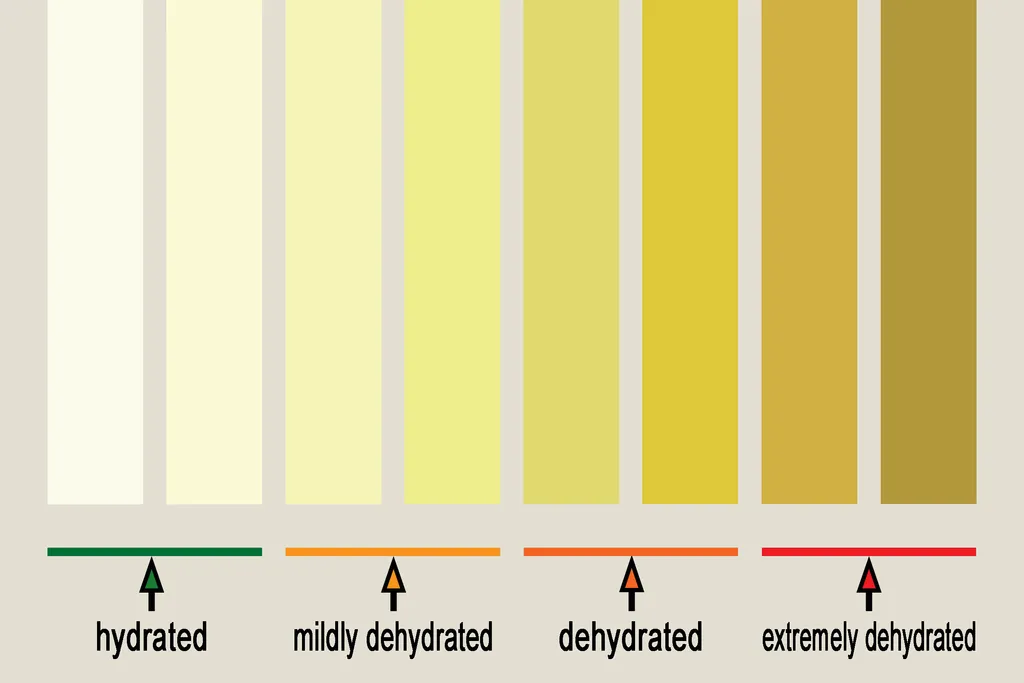Hydration Facts To Avoid Dehydration
Peak performance thwarted by dehydration? Discover 3 easy methods to recognize the signs and enhance work rate execution!

This article is part of a series. Check them out all!
- Heart Rate Zones
- Energy Production: Fueling the Body
- Why Does Exercise Retain Water?
- All About Metabolism
- How Anabolism and Catabolism Shape a Stronger, Leaner Body!
- How to Build Muscle while Losing Fat – Body Recomposition
- What are the Requirements of Muscle Growth?
- How to Start Training to Build Muscles Optimally
- Sets & Reps
- The Body’s Fuel Sources
Sweat loss tends to be significant during physical activity, particularly in warm climates. With perspiration, both water and electrolytes are depleted. If not adequately replenished, this reduction may result in diminished performance and, in severe cases, dangerous heat-related conditions. Younger individuals face a heightened risk of dehydration and heat-related complications. The severity of dehydration varies, with symptoms and treatments differing accordingly.
Maintaining a balance between fluid intake and energy exertion supports peak athletic performance. Proper hydration should effectively compensate for sweat loss.
| Symptoms | Treatment |
|---|---|
| Heat Cramps | |
| Muscle spasms caused by an imbalance of water and electrolytes. | Moving to a cooler environment is recommended. |
| Commonly affects the legs and abdominal muscles. | Hydration with water or electrolyte beverages is advised. |
| Gentle stretching and muscle massage may provide relief. | |
| Application of ice may be beneficial in certain cases. | |
| Heat Exhaustion | |
| Normal to elevated body temperature. | Immediate relocation to a cool, shaded area is suggested. |
| Excessive sweating. | Hydration with water or electrolyte beverages is essential. |
| Cool, clammy, or pale skin. | Removing excess clothing can aid in cooling. |
| Headache, dizziness, or confusion. | Ice packs may be placed on major arteries (armpits, groin, neck). |
| Anxiety, nausea, weakness, or fatigue. | In some cases, immersion in cool water may be beneficial. |
| Rapid pulse. | |
| Heat Stroke | |
| The body’s cooling system ceases to function properly. | Emergency medical assistance (911) should be contacted immediately. |
| Body temperature rises above 104°F. | A cool bath with ice packs on major arteries (armpits, groin, neck) may aid in temperature reduction. |
| Sweating stops. | Hydration with water or electrolyte beverages is crucial. |
| Nausea, vomiting, headache, dizziness, or vertigo. | Intravenous (IV) fluids may be required in severe cases. |
| Shallow breathing and rapid pulse. | |
| Confusion, disorientation, or loss of consciousness. |
What Should Be Consumed for Hydration?
During physical activity, significant electrolyte loss occurs along with fluid depletion. According to the Institute of Medicine, beverages intended for replenishment should contain sodium, potassium, and carbohydrates. Sufficient sodium intake plays a crucial role in preventing muscle cramps, while carbohydrates contribute to sustaining energy levels.

Fluid and Electrolyte Needs for Exercise
The required amount of fluid and electrolytes varies based on several factors influencing sweat loss, including age, biological differences, clothing, environmental conditions, type of physical activity, and duration.
Hydration plays a vital role, particularly for endurance athletes, those engaged in multiple training sessions or competitions in a single day, and individuals experiencing higher-than-average sweat loss.
Exercise and Hydration
- Before Exercise
Optimal hydration before physical activity supports performance. A minimum of four hours prior to exercise, approximately one-half cup (125ml) of fluid should be consumed for every 40 pounds (18kg) of body weight. - During Exercise
Consuming fluids consistently throughout physical activity is essential, though exact amounts depend on sweat rate, exercise intensity, and duration. Hydration should take place during every break, with sports drinks recommended for vigorous activity lasting 30 minutes or longer. - After Exercise
Replacing lost fluids remains a key component of recovery. A well-balanced diet generally supports rehydration, but incorporating sodium-rich foods helps replenish losses from sweating. Increased sodium intake during recovery enhances thirst and improves fluid retention. A general guideline suggests consuming three cups of fluid for each pound of body weight lost during exercise. Hydration can also be supported through fruits and vegetables, which provide additional fluid content.
Monitoring Hydration Status
Hydration can be assessed through three simple methods.
1. Sweat Rate
Tracking changes in body weight before and after exercise provides an estimate of sweat loss. Weighing should be done prior to activity, either without clothing or in typical workout attire. After exercise, dry clothing should be worn, and excess sweat should be wiped off before weighing again. The difference in body weight represents the amount of sweat lost.
- 1 pound = 16 ounces of sweat
- 0.5kg = 500ml of sweat
For each pound lost, 16–24 ounces (500 – 700ml) of fluid should be replenished within 24 hours.
2. Specific Gravity
Hydration can also be assessed by measuring urine’s specific gravity using test strips, which are available at most pharmacies. The process involves collecting a urine sample, dipping the test strip into the sample, and comparing the resulting color to the reference chart provided with the product.
3. Urine Color
Observing urine color during exercise provides another indicator of hydration levels. The following chart serves as a guideline:

- Hydrated: Indicates optimal hydration.
- Mildly dehydrated: Suggests a need for increased fluid intake.
- Dehydrated: Signals significant dehydration concerns.
- Extremely Dehydrated: Requires immediate attention.
Maintaining proper hydration supports overall health and athletic performance.
